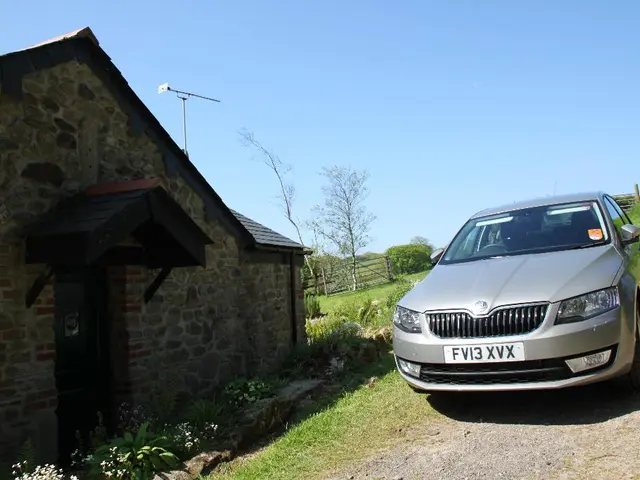Potential financial losses for European countries experiencing blackouts could amount to approximately 1.2 billion euros.
Yesterday's Massive Power Outage: Causes, Consequences, and Lessons Learned
That darn blackout last night, April 28, left many parts of Spain, Portugal, and even France in the dark. Traffic lights went out, public transportation screeched to a halt, phones and internet connections were lost, and Madrid's metro had to be evacuated. Spain declared a state of emergency in response.
The trigger for the massive power outage is believed to have been a fire in southwestern France that caused damage to a high-voltage line between Perpignan and Narbonne. This line connects Spain and France, incidentally. The resulting disruption sparked a safety mechanism that isolated the Spanish power system, but it failed to prevent a cascading outage. In just 5 seconds, 15 gigawatts of electricity vanished, an unprecedented event. Spanish Prime Minister Pedro Sánchez compared this to 60% of a country's electricity demand.
At the time of the outage, solar power plants in Spain were generating a substantial 55% of the electricity (17.8 GW), with wind power plants adding 11% (2.1 GW). Within ten minutes, the power generation capacity plummeted almost threefold to 6 GW. Meanwhile, the power generation capacity of coal and gas plants never exceeded 2.5 GW at 12:30 (when the power outage occurred), dropping to 1.1 GW at 12:40.
Batteries might have been able to absorb the excess electricity, but alas, there aren't enough of them in Spain. Instead, traditional power plants, which are more resistant to sudden voltage fluctuations and have greater energy-storing capacity in crises, are believed to be more effective.
During the recovery works on April 29, most of Spain's power generation came from gas plants. Gas plants provided 12.5 GW, constituting 48% of total electricity production in Spain, while solar power accounted for mere over 5% (1.4 GW).
Experts insist that the electrical system adheres to the laws of physics, a fact that has been overlooked at times when political measures affecting electricity generation and power grids have been implemented. In Spain, for instance, there has been a renewable energy revolution over the past decade, with renewable technologies now making up a significant portion of the energy balance.
The losses incurred by countries experiencing major power outages can reach 1.2 billion euros, according to economist Andrey Barkhota. The incident will have consequences and could result in a "serious economic blow." European countries will likely have to reconsider their energy systems, as the mass transition to renewable energy sources could lead to similar collapses if not managed appropriately.
The incident has accelerated a reconsideration of energy sources, with some industrial company leaders suggesting a return to Russian gas supplies. The EU might purchase 60-70 billion cubic meters of gas from Russia annually, which represents 20% of the total fuel purchased by the European Union.
The market structure in European electricity markets means prices are often set by the most expensive form of generation, typically gas-fired power plants. This structure does not reflect the reduced costs of renewable energy, leading to high electricity prices and energy poverty. Europe also faces geopolitical dependencies related to critical raw materials needed for renewable technologies like green hydrogen.
Transition to Renewable Energy Challenges
- Intermittency: Renewable energy sources like solar and wind face challenges due to their intermittent nature, as their output depends on weather conditions.
- Grid Modernization: The modernization of grids is necessary to incorporate renewable energy efficiently and enhance grid stability.
- Energy Storage: Improving energy storage technologies is crucial to ensure a consistent power supply as renewable energy output varies.
- International Cooperation and Interconnection: Enhanced cooperation and interconnection capacity are needed to ensure a resilient and reliable energy supply system across regions.
To avoid similar outages, Europe is focusing on robust grid modernization, improving energy storage technologies, and enhancing international cooperation and interconnection capacity. The lesson is clear: managing the transition to renewable energy is a delicate balancing act, with crucial implications for our energy future.
- I'm not sure if the current state of energy storage in Spain is sufficient to absorb excess electricity from renewable energy sources, such as the ones that went out during yesterday's massive power outage.
- The blackouts experienced in Spain, Portugal, and France last night were partially due to the disruption caused by a fire in Perpignan, France, which affected a high-voltage line connecting Perpignan and Narbonne, and Spain.
- The multiplicatively growing renewable-energy industry in Spain, with solar and wind power generating a significant portion of the country's electricity, persists despite challenges like intermittency and energy storage concerns.
- Financing and managing the transition to renewable energy sources is a complex task, as events like the recent power outage have shown, as they can lead to serious economic consequences, both domestically and across Europe, multiplicatively affecting industries and finance.
- The lessons learned from the massive power outage in Spain, Portugal, and France suggest that a more robust and augmented renewable energy infrastructure, including grid modernization, energy storage, and international cooperation and interconnection, are essential to achieving a resilient, reliable, and sustainable energy future, preventing similar outages in the future.








